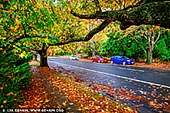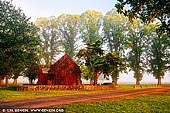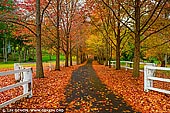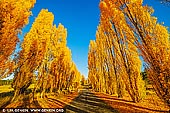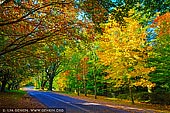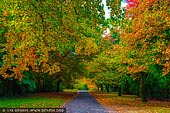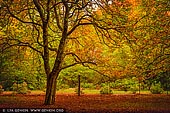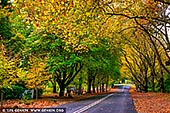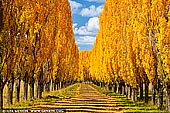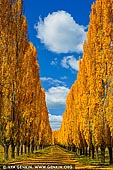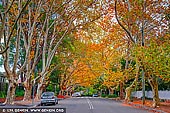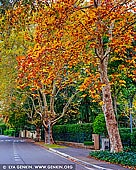Autumn Colours of Australia
Aussie autumn doesn't kick off in earnest until March. And while you wouldn't usually associate the land of beaches, surfing and summer heat with glorious autumnal colour, some places are really beautiful in Fall. Unfortunately there are not many places in Australia where you can enjoy autumn colours when the leaves start to change colour, from green to yellow, orange and varying shades of red. The cooler areas of Australia are the best for autumn colour - Perth, Melbourne, Sydney, the Adelaide hills, the mountains and Tasmania. The most popular places for enjoying autumn foliage is probably Mount Wilson and Blackheath in Blue Mountains near Sydney, Orange in NSW, High Country in Victoria and especially around Bright and Mount Beauty, Dandenong Ranges, Canberra.
It is the deciduous trees that lose their leaves in the winter and in the process undergo changes in colour in the autumn. While there are deciduous trees in many parts of Australia, they may not make much impact with massed autumnal colour changes.
Autumn colours depend upon the genetic make-up of the particular species, upon the rainfall and hours of sunlight it receives, and the temperatures experienced in autumn, when the plant stores sugars and other nutrients. Cold nights and even frosts are required for the development of the deepest colours in deciduous trees. The production of green chlorophyll falls as the nights become longer and other compounds increase, also assisted by high sugar levels in the leaves. Red and purple pigments come from anthocyanins. In the autumn anthocyanins are manufactured from the sugars that are trapped in the leaf. In most plants anthocyanins are typically not present during the growing season. As autumn progresses, the cells in the abscission layer become more dry and corky. The connections between cells become weakened, and the leaves break off with time. Many trees and shrubs lose their leaves when they are still very colourful. Some plants retain a great deal of their foliage through much of the winter, but the leaves do not retain their colour for long. Like chlorophyll, the other pigments eventually break down in light or when they are frozen. The only pigments that remain are tannins, which are brown.
Temperature, sunlight, and soil moisture greatly influence the quality of the autumn foliage display. Abundant sunlight and low temperatures after the time the abscission layer forms cause the chlorophyll to be destroyed more rapidly. Cool temperatures, particularly at night, combined with abundant sunlight, promote the formation of more anthocyanins. Freezing conditions destroy the machinery responsible for manufacturing anthocyanins, so early frost means an early end to colourful foliage. Drought stress during the growing season can sometimes trigger the early formation of the abscission layer, and leaves may drop before they have a chance to develop autumn colouration.
A growing season with ample moisture that is followed by a rather dry, cool, sunny autumn that is marked by warm days and cool but frostless nights provides the best weather conditions for development of the brightest autumn colours. Lack of wind and rain in the autumn prolongs the display; wind or heavy rain may cause the leaves to be lost before they develop their full colour potential.
Many places like Melbourne, Mount Wilson and Adelaide Hills have beautiful gardens opened to public to welcome the stunning sight of autumn with explosions of gorgeous gold, pink, brown and radiant red colours.
About the Artist
I'm Ilya Genkin - an internationally recognised Australian landscape and fine art photographer offering wall art prints. My passion for capturing the beauty of nature and our world translates into striking photographic prints that bring life, emotion, and inspiration to any space. From tranquil seascapes to dramatic mountainscapes, each image is a reflection of my vision and dedication to the art of photography.
Read more about Ilya Genkin and shop fine art prints online from his collection.
Wall Art Prints Featuring Fine Art Landscape Photography
Explore my extensive collection of wall art prints - crafted with the highest-quality materials to suit every style and budget. Whether you're looking for a luxurious, ready-to-hang piece or a beautifully printed work to frame yourself, each photograph is available in several premium formats: Gallery-quality Fine Art Paper Prints - ready for framing, and Professional Canvas Prints - classic and timeless texture.
Each artwork is meticulously printed and made-to-order to ensure you receive a piece that elevates your home, office, or commercial space. Buy fine art prints online to suit your style.
Artworks for Interior Designers, Home Stylists, and Architects
I collaborate with interior designers, home stylists, and architects to create bespoke wall art prints tailored to your project's aesthetic, colour palette and interior design needs. Prints can be customised and sized to complement your space perfectly. All pieces are made-to-order, and pricing varies based on size, quantity, and shipping.
Contact me to discuss your project and request a personalised quote.
Why Choose Ilya Genkin Photography?
By choosing my work, you're not just acquiring exceptional art - you're supporting an independent Australian artist and contributing to a vibrant local creative community. Every purchase directly helps sustain and grow this craft, bringing authentic and meaningful art into your life.
Request a free mockup to see how a chosen photograph will look in your space before you buy.
Start your journey today - shop our wall art collection, purchase with confidence, or order custom prints today and transform your walls with fine art photography.
Fine Art Landscape Photography
Information
Photography Guides
Online Store Opens 24/7
Email:
Phone: +61 (0) 421 055 613
Crafted with care for the planet - using sustainable materials and eco-friendly packaging.
Ilya Genkin Photography acknowledges the Traditional Custodians of the land on which we operate, live and gather as employees, and recognise their continuing connection to land, water and community. We pay respect to Elders past, present and emerging.
